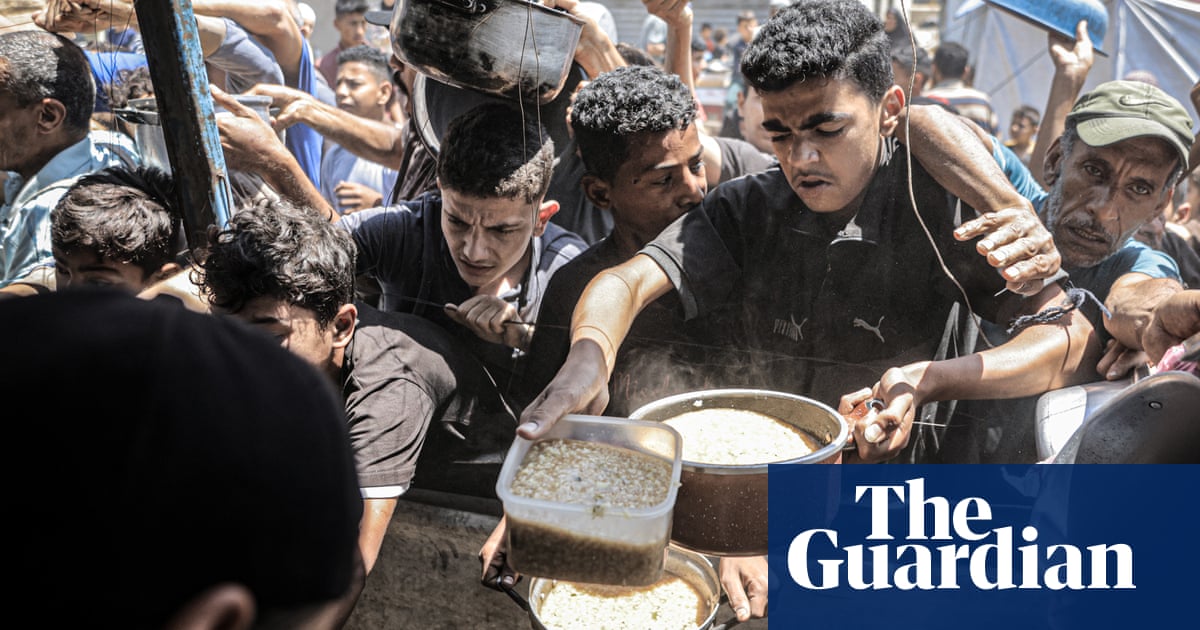The bloody chaos that has overtaken food distribution in Gaza has worsened with more mass casualties among Palestinians trying to reach humanitarian assistance, while the US-Israeli organisation tasked with deliveries claimed that five of its local workers had been killed byHamas.
TheGazaHumanitarian Foundation (GHF) said on Thursday that a bus full of its Palestinian staff was attacked by Hamas at 10pm local time on Wednesday, with at least five deaths and other workers taken hostage.
It was not immediately clear why the organisation was attempting a night-time delivery. The Israel Defense Forces (IDF) have warned Palestinians not to approach food distribution points before 6am. The GHF reportedly claimed on its Arabic Facebook page that it had carried out a 3am food distribution.
The GHF did not respond to inquiries about the night distribution but its newly appointed chair, the evangelical preacher and Trump adviser Johnnie Moore, said on social media: “These dear people were murdered by Hamas because they just wanted to feed their people. They were not militants. They were humanitarians, many of them young people.
“The principle of impartiality does not mean neutrality. There is good and evil in this world. What we are doing is good and what Hamas did to these Gazans is absolute evil.”
Hamas has not commented on the GHF claims, but said it had killed 12 members of the Israeli-backed Abu Shabab after detaining them overnight. Reports from Khan Younis in southern Gaza said Abu Shabab members were publicly executed overnight in the city. There have been increasingly bloody clashes in recent days between Hamas and the militia led by an Israeli-backed local warlord,Yasser abu Shabab.
Israeli forceskilled at least 60 Palestinians in Gazaon Wednesday, nearly two-thirds of them as they were seeking food from GHF food points, according to local health authorities.
There were more mass casualties reported on Thursday morning. The Palestinian civil defence agency told Agence France-Presse (AFP) that Israeli forces had killed 22 people across Gaza, of whom 16 had been waiting to collect aid.
The distribution of food and basic supplies in the war-ravaged Gaza Strip has become increasingly fraught and perilous, exacerbating the territory’s deep hunger crisis.
A civil defence official, Mohammed al-Mughayyir, told AFP that al-Awda hospital received 10 dead and about 200 wounded, including women and children, “after Israeli drones dropped multiple bombs on gatherings of civilians near an aid distribution point around the Netzarim checkpoint in central Gaza”.
In parallel with the GHF effort, Israel has begun allowing limited UN food aid to enter Gaza for the first time in three months after themass casualtiessince the attempt to set up the militarised US-Israeli alternative.
The IDF said on Thursday morning that 56 humanitarian aid trucks from the UN’s World Food Programme (WFP) had crossed into Gaza the previous day through the Zikim crossing at the northern end of the occupied territory.
The food was allowed in “with the approval of the political echelon and on the recommendation of the security authorities”, an IDF statement said.
The WFP confirmed it had been able to get some food into Gaza over the past few days but not to distribute it in any organised way. After several incidents of looting, the aid agency has been driving trucks into populated areas and allowing local people to unload the food themselves.
“Since the limited resumption of humanitarian assistance into Gaza on 19 May, WFP has been able to bring only small amounts of food into Gaza. This is largely due to delays or denials of permission for humanitarian movements due to expanded military operations,” the WFP said in a statement.
It said fewer than 7,000 metric tonnes of aid had entered Gaza by 11 June. Israel imposed a total blockade on Gaza on 9 March, partially lifting it in May for the WFP and GHF supplies, but it will not allow the UN relief agency for Palestinian refugees, Unrwa, to carry out distribution.
Unrwa has by far the biggest aid distribution network in Gaza but it has been banned by Israel on the grounds of allegations of complicity with Hamas. After an internal investigation,Unrwa fired nine of its 13,000 employeesin Gaza in August 2024 on suspicion of involvement in the Hamas attack the previous October, but found no evidence to substantiate Israel’s broader claims. Israel cut all ties with Unrwa in January, with backing from the Trump administration.
The GHF is intended to be a substitute for Unrwa but its method of delivering food to a limited number of sites in heavily militarised areas has led to more than 160 deaths since it began operations two weeks ago, as Israeli forces have opened fire on desperate Palestinians trying to reach the food distribution points.
The GHF’s plan to set up a militarised food delivery system was criticised by humanitarian experts and its first director resigned because he said the scheme ran counter to “humanitarian principles”.
“The so-called new way of handling assistance in Gaza is most degrading, humiliating and puts lives in danger,” Philippe Lazzarini, the head of Unrwa said on social media. “This ‘model’ will not address the deepening hunger. The dystopian ‘Hunger Games’ cannot become the new reality. The UN including Unrwa have the knowledge, expertise & community trust to provide dignified and safe assistance. Just let the humanitarians do their jobs.”
